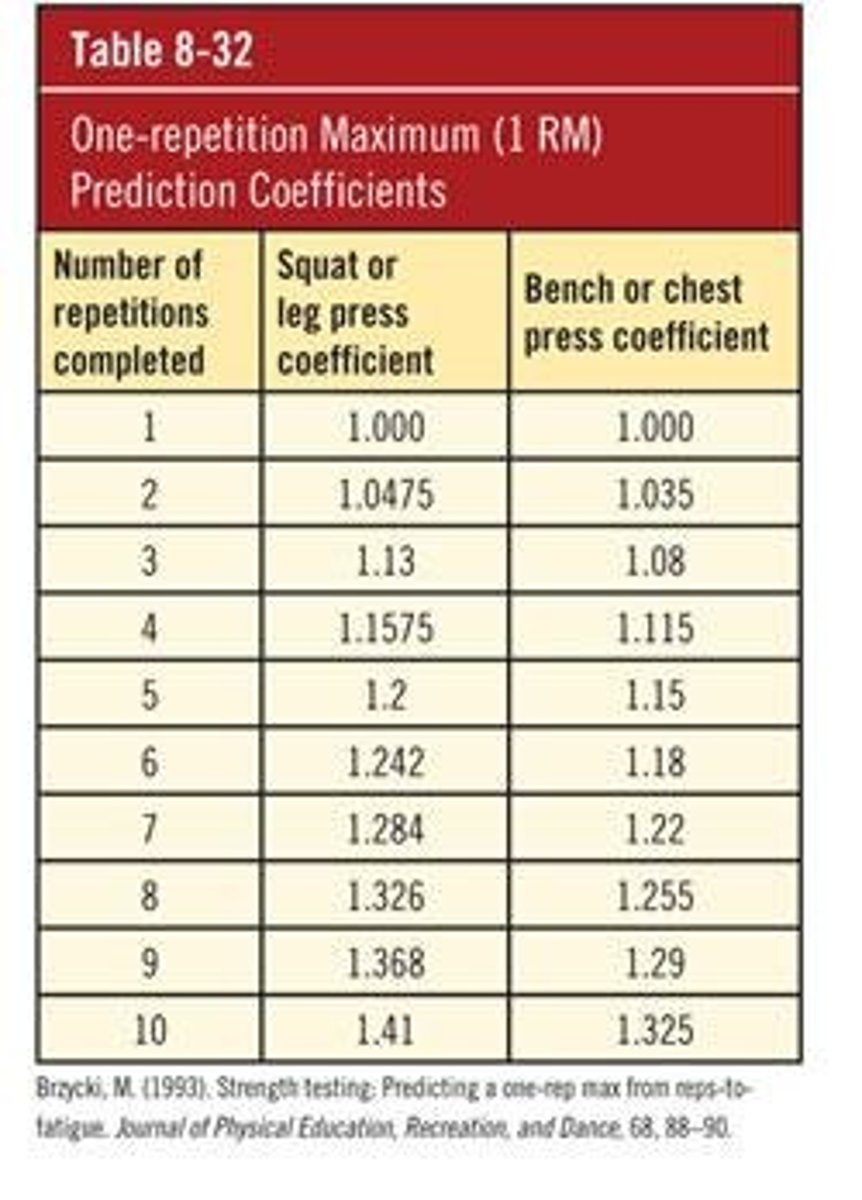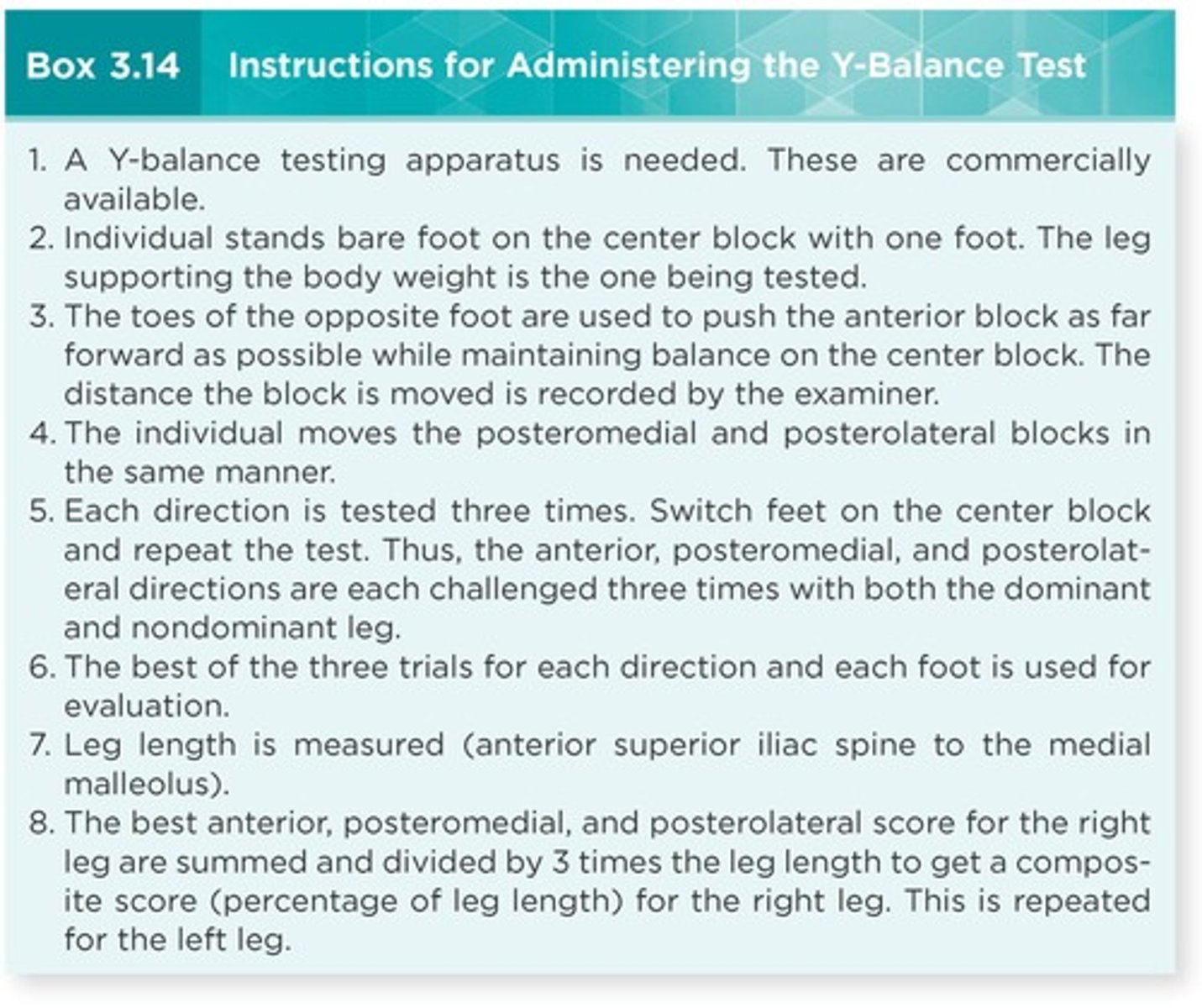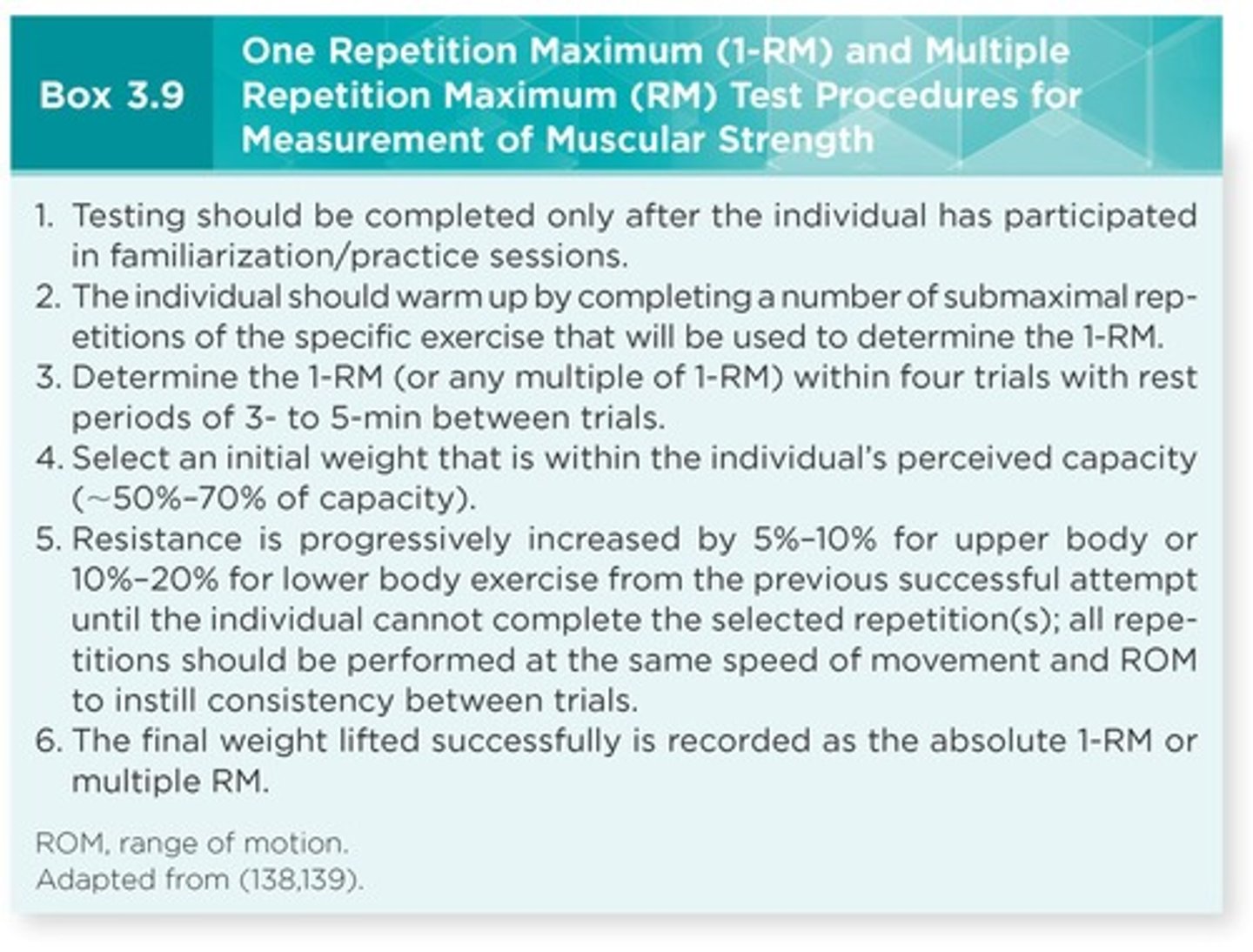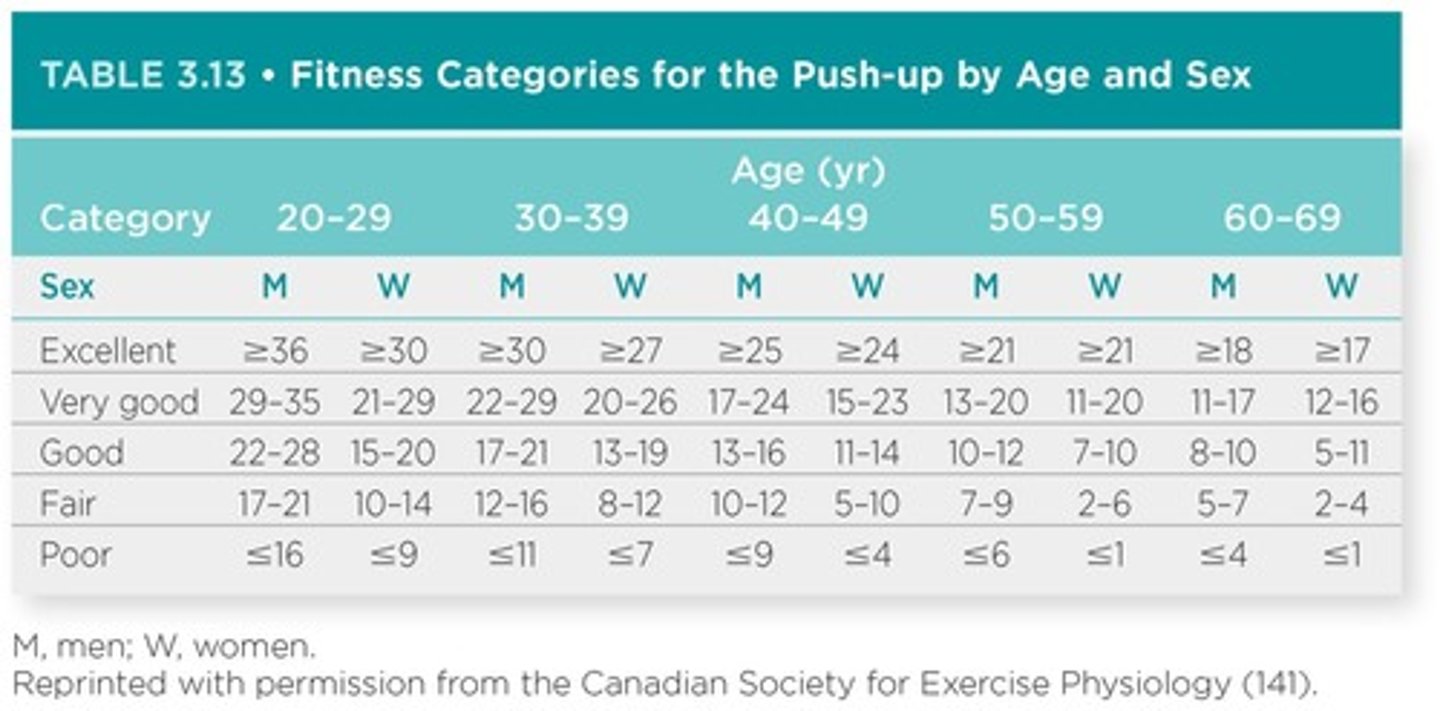Muscular Fitness, Flexibility, and Balance: Assessment and Health Benefits
1/49
There's no tags or description
Looks like no tags are added yet.
Name | Mastery | Learn | Test | Matching | Spaced |
|---|
No study sessions yet.
50 Terms
Muscular Strength
Ability to exert force
Muscular Endurance
Ability of muscle to make repeated contractions or to resist muscular fatigue; >12 reps to fatigue
Flexibility
The functional capacity of the joints to move through a full range of movement
Muscular Power
Ability to or rate at which one can perform work
Muscular Fitness
Comprises 3 components: muscular strength, muscular endurance, & flexibility
Health aspects of muscular fitness
Preservation or enhancement of health aspects with aging
Pre-participation evaluation
Medical history/PAR-Q+
Relative Contraindications to RT & Testing
Major risk factors for testing
Muscular fitness testing guidelines
Aerobic Warm-up, Familiarization, Consistent repetition duration, Full ROM, Use of Spotters
Muscular strength & muscular endurance testing
Specific to: Muscle or muscle group, Type of muscular contraction
Baseline
Can compare to 'norms,' help locate weak muscle groups, help design individualized training programs.
Progression
Show progression from baseline.
Absolute strength values
Measured in kg lifted; compare to previous tests.
Relative strength
Expressed as kg lifted/kg body weight; allows comparisons between men and women, people of different body weights.
Isometric or Static Testing
Strength assessment specific to muscle group & corresponding joint angle; not a good indicator of overall strength in general population.
Isokinetic Testing
Maximal muscle tension throughout a range of motion; set at a specific velocity (e.g. 60 angles/s).
Dynamic Testing
Most common strength assessment; involves movement of joints (e.g. a push-up).
Gold Standard
Heaviest weight that can be lifted using good form.
Estimating 1-RM
Familiarize them with the equipment; allow the participant to warm-up; estimate a weight the person can safely lift for a specific number of repetitions.
1RM Equation
1RM (lbs) = [1 - (number of reps x 0.02)].
Bench press weight Ratio
Weight pushed in lbs divided by body weight in lbs.
Leg press weight Ratio
Weight pushed in lbs divided by body weight in lbs.
Multiple RM Prediction Equations
1RM = Wt (lbs lifted) x coefficient.

Muscular Endurance Testing
Examining the total number of repetitions at a given amount of resistance.
Comparative Muscular Endurance
Comparing the number of repetitions performed at a specific percentage of 1-RM pre and post testing.
Example Test
Maximum number of Push ups.
Estimating 1RM from tests
Can be used as an indication of muscular fitness if performed to failure.
Conservative approach
Used for patients with known disease; mimics exercise recommendations.
Countermovement Vertical Jump
A commonly used surrogate for estimating muscular power in a younger population.
Kinetic Chain
The concept that the body operates as a series of interconnected segments.
Muscle Viscosity
A factor that affects flexibility, related to the thickness and stickiness of muscle tissue.
Joint Capsule Health
A determinant of flexibility, referring to the condition of the connective tissue surrounding joints.
Benefits of Flexibility Exercises
Includes maintaining good posture, increasing resistance to muscle injury and soreness, alleviating low back problems, and improving alignment.
Goniometry
The measurement of joint angles to assess flexibility.
Balance
The ability to maintain a stable position.
Balance Training
Exercises aimed at reducing the risk of ankle sprains and improving overall balance.
Static Balance
The ability to maintain a stationary position.
Dynamic Balance
The ability to maintain postural control while in motion.
Balance Error Scoring System (BESS)
A test that counts the number of balance errors made while standing in different positions.
Y-Balance Test
A test that measures the distance an individual can reach with one foot while maintaining balance on the other foot.

ACSM Guidelines
Standards that include ratings and percentiles for population norms in fitness assessments.
1-RM
One-repetition maximum, the maximum amount of weight that can be lifted for one repetition.

Push-ups Test
A test to evaluate muscular fitness by counting the maximum number of push-ups performed.

Leg Press Test
A test to estimate the one-repetition maximum for leg strength.
Chest Press Test
A test to estimate the one-repetition maximum for upper body strength.
Pre-participation Health History Questionnaire (HHQ)
A form used to identify any signs, symptoms, or diagnoses of cardiovascular, metabolic, or musculoskeletal diseases.
Moderate Physical Activity
Daily activities that contribute to overall fitness without being structured exercise.
Muscular Fitness Assessment
A process to evaluate an individual's muscular strength and endurance.
Flexibility Program Benefits
Enhances personal appearance, self-image, and facilitates the development and maintenance of flexibility throughout life.
Neuromuscular Tension
The tension in muscles and nerves that can be reduced through flexibility exercises.